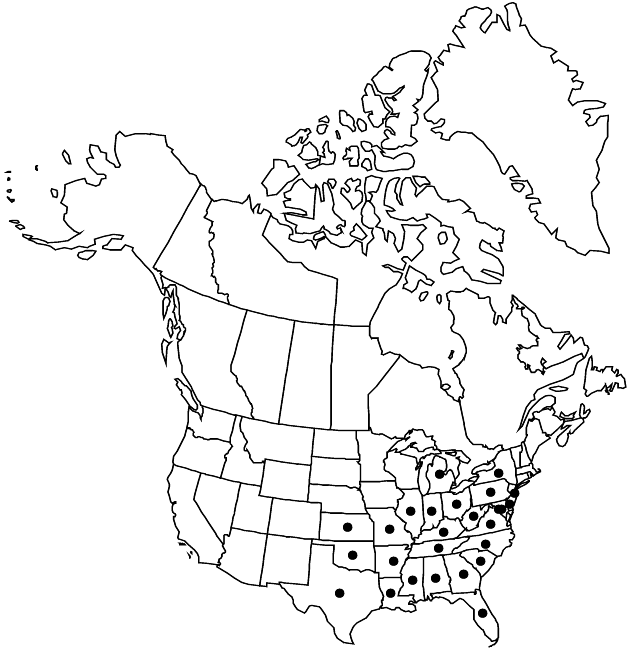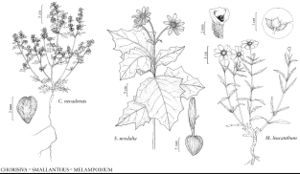Smallanthus uvedalia
Man. S.E. Fl., 1509. 1933.
IllustratedEndemic
Basionym: Osteospermum uvedalia Linnaeus Sp. Pl. 2: 923. 1753
Synonyms: Polymnia uvedalia (Linnaeus) Linnaeus Polymnia uvedalia var. densipilis S. F. Blake Polymnia uvedalia var. floridana S. F. Blake
Treatment appears in FNA Volume 21. Treatment on page 34.
Leaves: petioles 3–12+ cm, blades 10–35 (–60+) × 10–35+ cm, larger usually 3–5-lobed. Ray laminae 12–30+ mm. Cypselae 5–6 mm. 2n = 32.
Phenology: Flowering Jun–Aug(–Oct).
Habitat: Thickets, forest margins, often wet sites
Elevation: 10–300+ m
Distribution

Ala., Ark., Del., D.C., Fla., Ga., Ill., Ind., Kans., Ky., La., Md., Mich., Miss., Mo., N.J., N.Y., N.C., Ohio, Okla., Pa., S.C., Tenn., Tex., Va., W.Va., in Bermuda
Discussion
B. L. Turner (1988) included types of Smallanthus uvedalia and S. maculatus (Cavanilles) H. Robinson within a single species circumscription. If that circumscription is accepted, the range of S. uvedalia extends through eastern Mexico and Central America to Panama.
Selected References
None.
Lower Taxa
None.
... more about "Smallanthus uvedalia"
introrse +
connate +
herbaceous +
scarious +
absent +
hirsute +
papillate +
corymbiform +
crowded +
continuous +
decurrent +
3-5-lobed +
larger +
winged;ribbed;winged;ribbed +
1;15 +
stigmatic +
absent +
zygomorphic +
yellow +
monomorphic +
30-40-ribbed +
dimorphic +
5mm;6mm +
staminate +
staminate +
straight +
distinct +
proximal +
1;5 +
bisexual +
dispersed +
singly +
singly +
indeterminate +
Present +
surrounding +
hemispheric +
petiolate +
opposite +
cauline +
deltate +
2-carpellate +
inferior +
attached +
anatropous +
persistent +
falling +
absent +
tough +
thick +
absent +
connate +
persistent +
distinct +
falling +
unequal +
Man. S.E. Fl., +
1933 +
pistillate +
fertile +
paleate +
flat;convex +
fibrous +
exalbuminous +
modifed +
alternate +
erect +
absent +
2-branched +
papillate +
Smallanthus uvedalia +
Smallanthus +
species +
campanulate +
shorter +
perennial +
subshrub +
